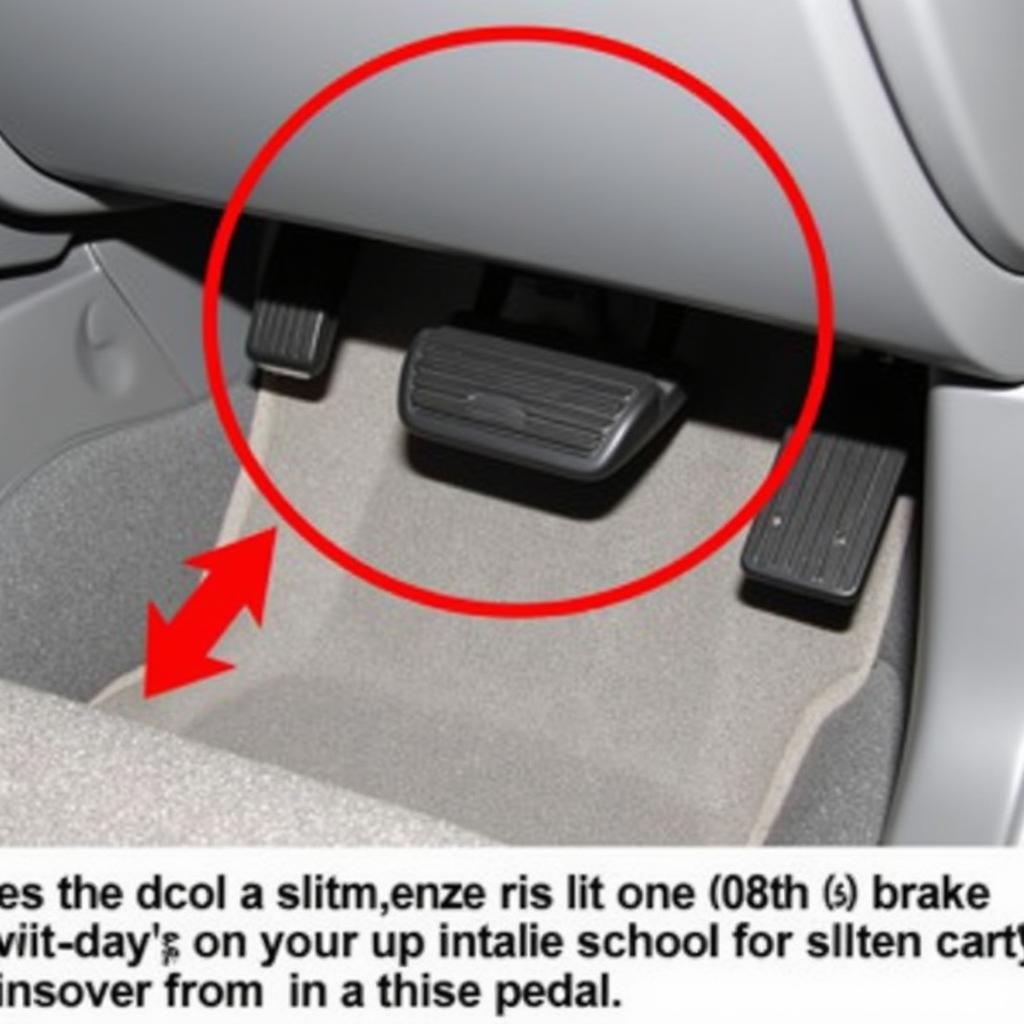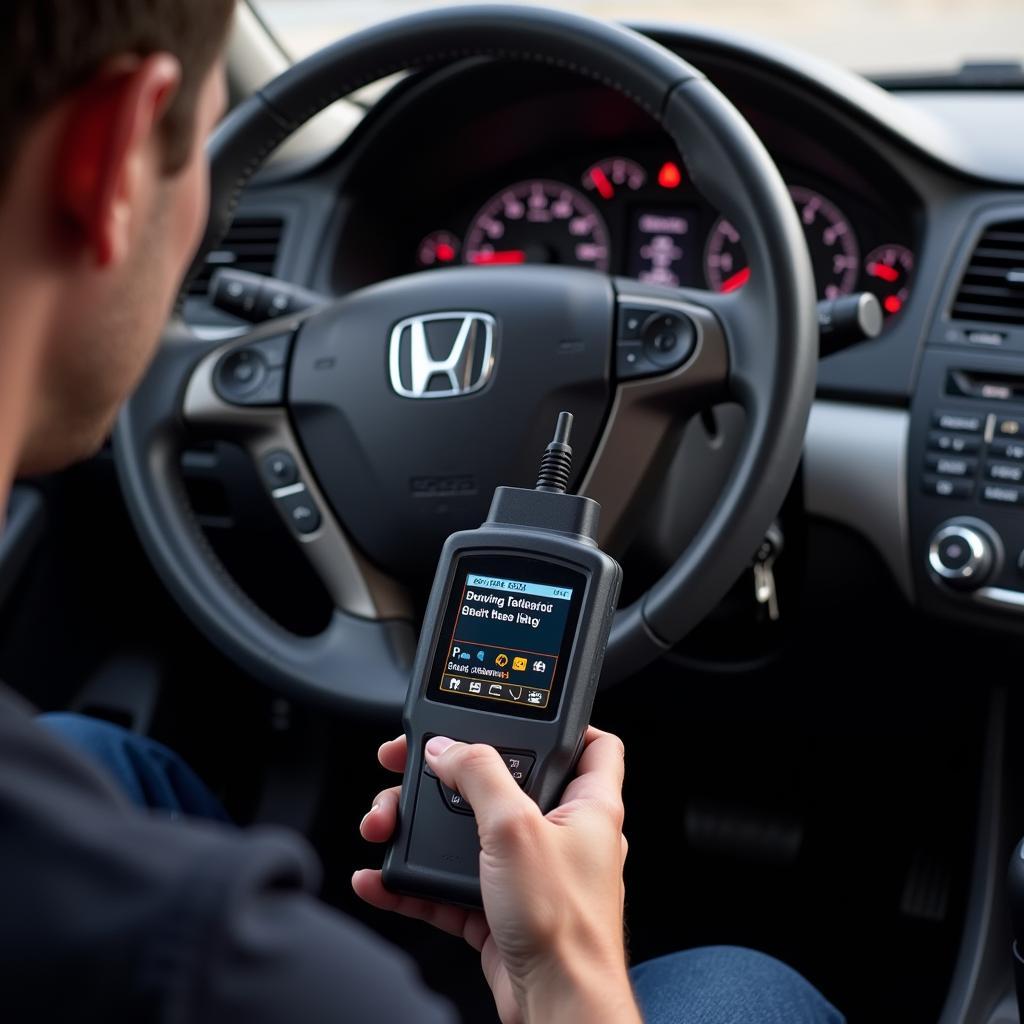A brake light warning on your 2006 Honda Accord’s dashboard means one or more of your brake lights aren’t working. This is a serious safety concern as other drivers rely on your brake lights to know when you’re slowing down or stopping. Ignoring this warning could increase the risk of accidents, especially at night or in low-visibility conditions. Let’s dive into the common causes and explore how to fix this issue.
Common Causes of a Brake Light Warning
Several culprits could be triggering the brake light warning on your 2006 Honda Accord:
- Burnt-out Bulb: The most common cause is a simple one – a burnt-out bulb. Like any other bulb, brake light bulbs have a limited lifespan and will eventually need replacement.
- Blown Fuse: A blown fuse in your car’s electrical system can interrupt power to the brake lights, triggering the warning on your dashboard.
- Faulty Brake Light Switch: The brake light switch is activated when you press the brake pedal, signaling the lights to turn on. A malfunctioning switch can disrupt this process.
- Wiring Problems: Damaged or corroded wiring within the brake light system can prevent the bulbs from receiving power, leading to a warning light.
Troubleshooting the Brake Light Warning
Before rushing to a mechanic, you can try these troubleshooting steps at home:
- Inspect the Brake Lights: Have a friend or family member press the brake pedal while you visually inspect all brake lights, including the high mount stop lamp. Look for bulbs that are out or noticeably dimmer than others.
- Replace Burnt-out Bulbs: If you identify a burnt-out bulb, replace it with a new one of the correct type. Refer to your owner’s manual for the correct bulb specifications.
- Check the Fuse Box: Locate your Honda Accord’s fuse box (usually under the dashboard or hood) and consult the diagram to identify the fuse associated with the brake lights. Inspect the fuse for any signs of damage or burning. Replace if necessary.
 Blown Fuse Honda Accord
Blown Fuse Honda Accord - Inspect the Brake Light Switch: Located above the brake pedal, the brake light switch can wear down over time. Look for signs of damage or misalignment. If unsure, consult a mechanic for further inspection.
 Brake Light Switch Location
Brake Light Switch Location
When to Seek Professional Help
If your brake light warning persists after performing the troubleshooting steps, it’s essential to consult a qualified mechanic. Diagnosing complex electrical problems or issues with the brake light switch often requires specialized tools and expertise.
Expert Insight:
“Many car owners underestimate the importance of a functioning brake light system,” says John Miller, a seasoned automotive electrician with over 20 years of experience. “It’s not just about avoiding tickets; it’s about ensuring the safety of yourself and others on the road. If you suspect any issues with your brake lights, it’s crucial to get them addressed immediately.”
Remote Diagnostics and Programming Solutions
In today’s technologically advanced world, remote diagnostics and programming offer a convenient and efficient way to address car problems.
How it works:
- Connect: Using a specialized device that plugs into your car’s OBD-II port, our certified technicians can remotely access your 2006 Honda Accord’s onboard computer system.
 Remote Car Diagnostics OBD2
Remote Car Diagnostics OBD2 - Diagnose: They can then run comprehensive diagnostics to pinpoint the root cause of your brake light warning with greater accuracy.
- Resolve: In some cases, the issue can be resolved remotely through software updates or recalibration, saving you a trip to the mechanic.
Conclusion
A brake light warning on your 2006 Honda Accord shouldn’t be ignored. By understanding the common causes and following the troubleshooting tips, you can often resolve the issue quickly. However, don’t hesitate to seek professional help if the problem persists. Utilizing remote diagnostics and programming can provide efficient and effective solutions, ensuring your car’s safety and your peace of mind.
